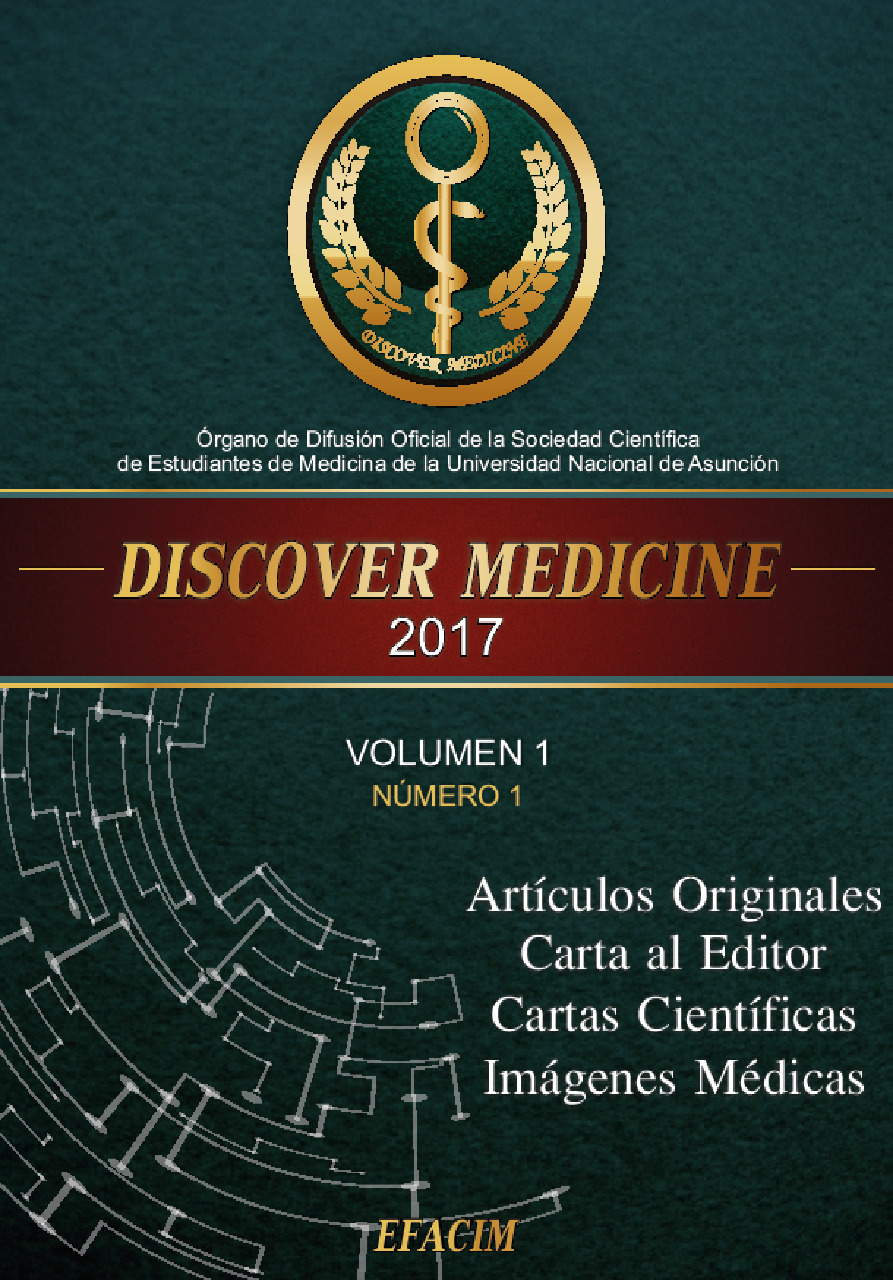Abstract
Background: One of the traditional uses of Baccharis trimera (commonly known as Jaguarete Ka’a) is the natural treatment of dyslipidemia, which is an important risk marker of cardiovascular disease. Overall objective. Determine the effect of the Baccharis trimera extract on the lipidemia in female Wistar rats with diet-induced dyslipidemia.
Methods: The design was experimental and was carried out in the Facultad de Ciencias Médicas of the Universidad Nacional de Asunción, between the months of July and September of 2014. The sample consisted in 15 adult female Wistar rats, distributed in three groups: group 1 (dyslipidemic rats with administration of extract), group 2 (dyslipidemic rats with administration of placebo) and group 3 (non-dyslipidemic rats with administration of placebo). The weight, the total the cholesterol, the HDLcholesterol and the triglycerides were measured three times and later compared using the Student’s t-test.
Results: There was a significant decrease (p < 0.05) of total cholesterol and triglycerides in group 1, but not in groups 2 and 3.
Conclusion: The Baccharis trimera extract possesses a hypolipidemic effect in female Wistar rats with diet-induced dyslipidemia
References
Taylor L, Carqueja. (B. genistelloides). Tropical Plant Data base. Rain Tree.;2012. Disponible en: http://www.rain-tree.com/carqueja.htm#.WKWT43_zJyA
Ibarrola D, Degen de Arúa R. Facultad de Ciencias Químicas. Catálogo ilustrado de 80 plantas medicinales del Paraguay. Asunción: UNA; 2011.
Alonso J. Tratado de Fitomedicina. 1ra ed. Buenos Aires: Isis Ediciones; 1998.
Karan T, Dalposo L, Casa D, De Freitas G. Carqueja (B. trimera): utilização terapêutica e biossíntese. Rev Bras Farmacogn. 2013 15(2):280-6. Disponible en: http://www.scielo.br/scielo.php?pid=S1516-05722013000200017&script=sci_abstract&tlng=pt
Perón A.P, Felipes, J, Mattge GI, Cantagalli LB, Mariucci RG, Vicentini VEP. Avaliação mutagênica das plantas medicinais B. trimera Less. E Solanummelongena L., em células de medula óssea de ratos Wistar. Revista Brasileira de Biociências.2008; 6(2).pag127-30. Disponible en: http://www.ufrgs.br/seerbio/ojs/index.php/rbb/article/view/960/781
Gorzalczany S, Rojo A, Rondina R, Debenedetti S. Estudio de Toxicidad Aguda por Vía Oral de Plantas Medicinales Argentinas. 1999;18(3). pag 211-4. Disponible en: http://www.latamjpharm.org/trabajos/18/3/LAJOP_18_3_1_8_40KB2N5848.pdf.
Hulley S, Cummings S. Diseño de la Investigación Clínica. Edición Española. HarcourtBrace. Madrid 1997.
Guidance for industry estimating the maximum safe starting dose and initial clinical trials for therapeutics in adult healthy volunteers. US Department of Health and Human Services. Food and Drug Administration (FDA). Center for Drug Evaluation and Research (CDER).Pharmacology and Toxicology. 2005. Disponible en: http://www.fda.gov/downloads/Drugs/Guidance/UCM078932.pdf
Souza P, Pereira L, Souza A, Santos D. Estudo da atividade antiobesidade do extrato metanólico de B. trimera (Less.) DC. Rev. Bras. Farm. 2012 (1):pag 27-32. Disponible en: http://www.rbfarma.org.br/files/rbf-2012-93-1-5.pdf
Souza P, Pereira L, Souza A, Santos D. Inhibition of pancreatic lipase by extracts of B. trimera (Less.) DC., Asteraceae: evaluation of antinutrients and effect on glycosidases. Rev. bras. farmacogn.2011; 21(3). pag 450-455. Disponible en: http://www.scielo.br/scielo.php?script=sci_

This work is licensed under a Creative Commons Attribution-NonCommercial-NoDerivatives 4.0 International License.
Copyright (c) 2023 Rodrigo Martín Cáceres Alfonzo, María Belén Coria Pimienta, Eliana Magalí Ramos Galeano, Evelyn Karina Riquelme Recalde
